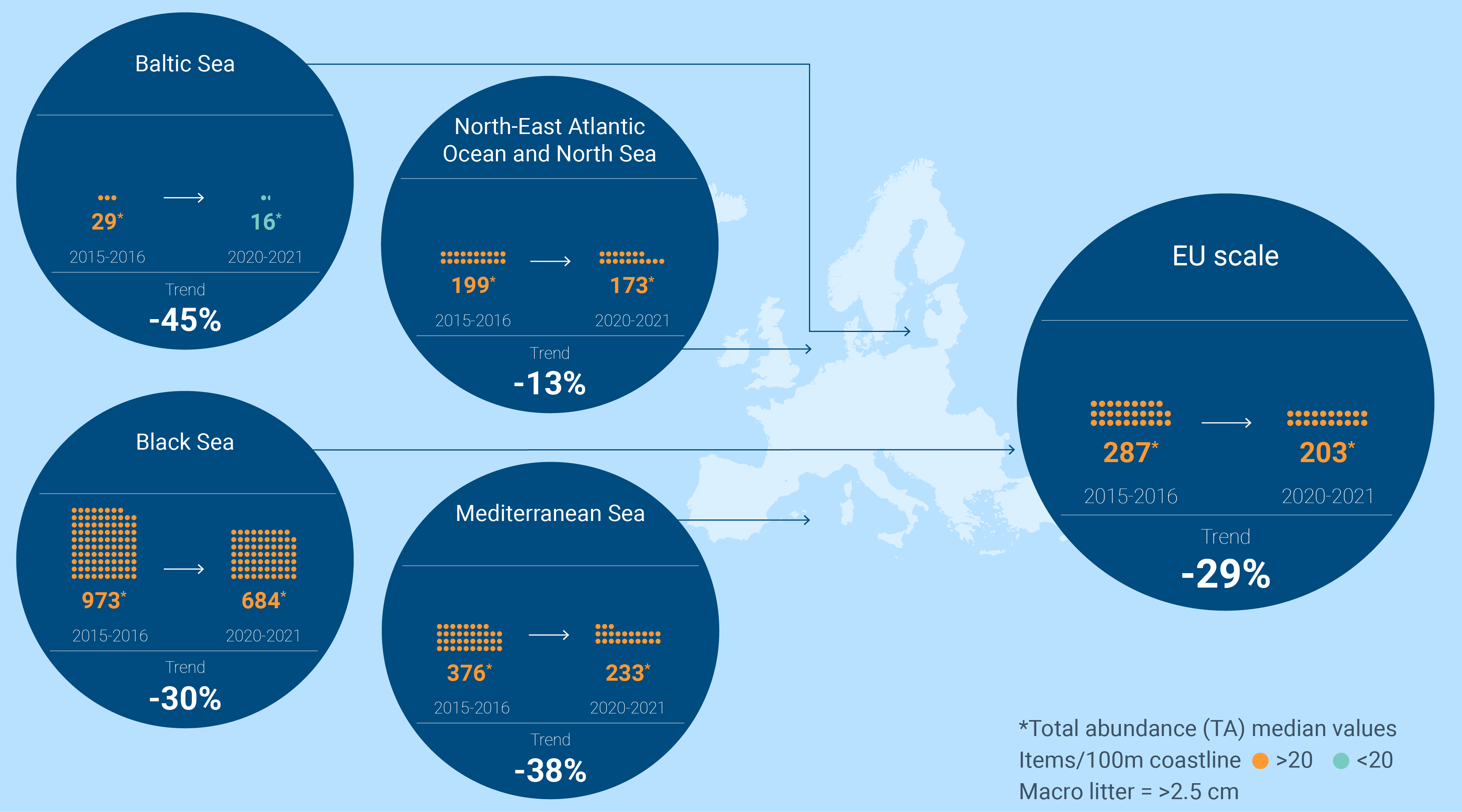All official European Union website addresses are in the europa.eu domain.
See all EU institutions and bodiesKey messages: Marine macro litter declined 29% along EU coastlines between 2015-2016 and 2020-2021. Single-use plastics decreased by 40%, and fishery-related items by 20% in the same period.
The EU Zero Pollution Action Plan (ZPAP) 2022 and 2024 assessments use “beach macro litter” data as a proxy indicator for the amount of plastic litter at sea. Based on a commonly agreed methodology, EU Member States collected beach litter data since 2012. The trends indicate progress towards the Marine Strategy Framework Directive’s (MSFD) good environmental status (GES), enabling the setting of intermediate quantitative targets and informing on progress towards Target 5 on coastline litter under the ZPAP.
The agreed MSFD EU coastline macro litter threshold value is 20 items per 100 metres of coastline. Between 2015–2016 and 2020–2021, the total abundance of litter per 100 meters of coastline decreased in the Baltic Sea (from 29 to 16 items), the North East Atlantic Ocean (from 199 to 173 items), the Mediterranean Sea (from 376 to 233 items), and the Black Sea (from 973 to 684 items).
The EU-wide total abundance of coastline macro litter decreased from 287 items per 100 in the same period to 203 items per 100 meters, representing a 29% reduction. The data shows that single-use plastics have also decreased by 40%, fishery-related items saw a 20% reduction, and plastic bag items dropped by 20% along EU coastlines. Data analysis suggests that the zero-pollution target of a 50% reduction in plastic litter at sea could be achievable by 2030 if the current trend continues. Nevertheless, the concurrent upward trend in European mismanaged plastic waste (EEA, 2023) highlights the necessity for advancements in managing waste and preventing leakages to maintain good progress.
Despite the encouraging trends showing the positive impacts of mitigation measures through EU legislation, regional and national efforts, and efforts by the public, litter abundance in many European areas remains high and demands the implementation of additional effective measures.
Please consult the relevant indicators and signals below for a more comprehensive overview on the topic.
Zero Pollution Action Plan 2030 target or policy objectives
- Reduce plastic litter at sea by 50%
Return to the main pages:
Other relevant indicators and signals
References and footnotes
- ↵JRC, 2024, MSFD Technical Group on Marine Litter, Hanke, G., Walvoort, D., Ruiz-Orejón, L. F., van Loon, W. M. G. M., Giorgetti, A., Molina-Jack, M. E., Vinci, M., European Coastline Macro Litter Trends 2015–2021, Publications Office of the European Union, Luxembourg, 2024, https://data.europa.eu/doi/10.2760/0752301, JRC138907.
- EEA, 2023, From Source to Sea: The Untold Story of Marine Litter, (online) From source to sea — The untold story of marine litter — European Environment Agency Accessed 16 December 2024↵



